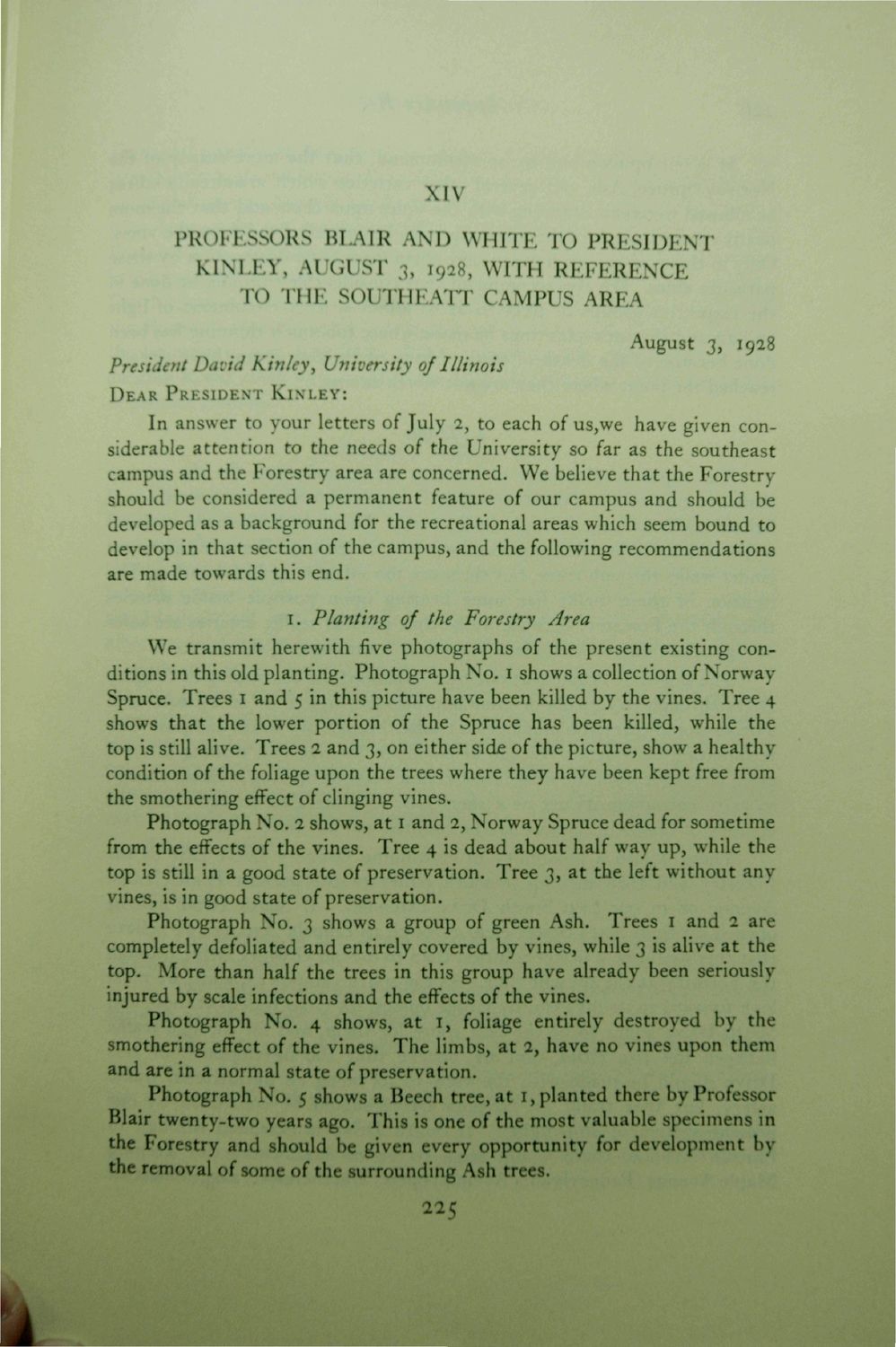| |
| |
Caption: Book - 30 Year Master Plan (Tilton & O'Donnell)
This is a reduced-resolution page image for fast online browsing.

EXTRACTED TEXT FROM PAGE:
XIV PROFESSORS BLAIR AND WHITE TO PRESIDENT KINLEY, AUGUST 3, 1928, WITH REFERENCE TO THE SOUTHEATT CAMPUS AREA August 3, 1928 President David Kin leyy University of Illinois DEAR PRESIDENT KINLEY: In answer to your letters of July 2, to each of us,we have given considerable attention to the needs of the University so far as the southeast campus and the Forestry area are concerned. We believe that the Forestry should be considered a permanent feature of our campus and should be developed as a background for the recreational areas which seem bound to develop in that section of the campus, and the following recommendations are made towards this end. 1. Planting of the Forestry Area We transmit herewith five photographs of the present existing conditions in this old planting. Photograph No. 1 shows a collection of Norway Spruce. Trees 1 and 5 in this picture have been killed by the vines. Tree 4 shows that the lower portion of the Spruce has been killed, while the top is still alive. Trees 2 and 3, on either side of the picture, show a healthy condition of the foliage upon the trees where they have been kept free from the smothering effect of clinging vines. Photograph No. 2 shows, at 1 and 2, Norway Spruce dead for sometime from the effects of the vines. Tree 4 is dead about half way up, while the top is still in a good state of preservation. Tree 3, at the left without any vines, is in good state of preservation. Photograph No. 3 shows a group of green Ash. Trees 1 and 2 are completely defoliated and entirely covered by vines, while 3 is alive at the top. More than half the trees in this group have already been seriously injured by scale infections and the effects of the vines. Photograph No. 4 shows, at 1, foliage entirely destroyed by the smothering effect of the vines. The limbs, at 2, have no vines upon them and are in a normal state of preservation. Photograph No. 5 shows a Beech tree, at 1, planted there by Professor Blair twenty-two years ago. This is one of the most valuable specimens in the Forestry and should be given every opportunity for development by the removal of some of the surrounding Ash trees. 225
| |